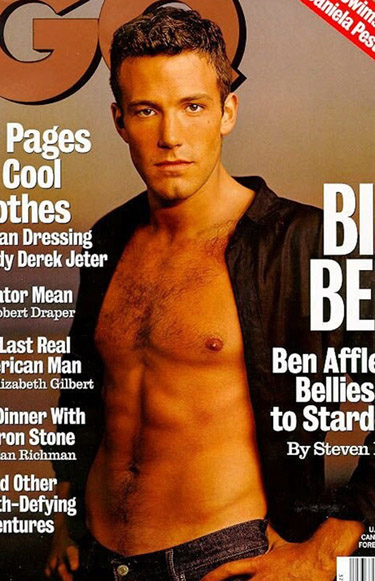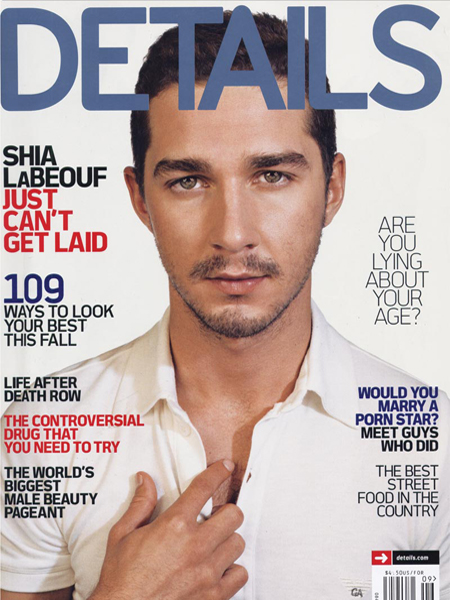Men's Magazines
Men's magazines constantly seek to legitimize masculinity in new and creative ways, often through strategic negotiating or accommodation of liberal, progressive or feminist discourses (Benwell 540). Different men's magazines represent different forms of masculinity, but elements of hegemonic masculinity are woven throughout (Ricciardelli 65).
Men's magazines are aware of how they "queer" the male gaze, but further confuse perceptions of masculinity by attempting to distance themselves from homosexuality by having the men pose with sporting goods, with women, or acting "macho" (Hall 70). They have sports features, offer heterosexual sex tips and often feature sexualized images of females. All this effort is done to make domestic consumption a masculine practice for heterosexual men (Draper 358).
There has been queer theory critically focused on this construction of heterosexuality in modern commercial images. It challenged commercial masculinity's cultural dominance and explored its resistance (Kates 26). Magazines are aware of the increasing social acceptance of homosexual men and advertisers' perception that homosexual men posses a lot of disposable income for identity-based consumption (358). Subsequently, gay sexuality remains significant, if not even more overt, but still mostly verbally unacknowledged. However, the target market for men's magazines remains heterosexual men, looking to improve themselves and their bodies in a culture that perpetuates an unattainable sense of perfection.

| |
Let's look at some examples:

| This issue of Men's Health features NBA basketball player Blake Griffin. Griffin is shirtless, wearing only a swimsuit and coming out of a swimming pool. He looks directly at the camera, directly engaging the viewer. His body is covered in water, and his impressive abdominals command attention. He is made to look like a Sports Illustrated swimsuit model- nearly naked, glistening with water and showing off his body; except he is a man. The way he is styled and photographed demands that men look at his body, think about it and compare it with their own. However, because Griffin plays men's basketball, a masculine sport, a man might feel ok with looking at his body. He's just an athlete, being athletic. The text around Griffin emphasizes this feeling, by listing traditionally masculine words, phrases and concepts like, "Fat-Shredding," "Wealth Plan," and "Bigger Arms Fast." There is even a photograph of an attractive woman with her breasts partially exposed under the anchored text "WHAT WOMEN FIND SEXY." Clearly, the magazine implies women find Blake Griffin's body sexy, so they want you to look at it, but not feel gay about it.
|
| This image is of actor Shia LeBeouf on the cover of Details magazine. On this cover, Shia is photographed much closer so you can see more of his face. Shia also stares directly at the camera and commands the viewer's attention. He is lit so that his eyes dazzle and become the most salient part of the image. His face has glows and his lips shine. The way he has been styled makes him look just a little bit sweaty. His hand reaches up to his shirt, opening it up to reveal just a little bit of chest hair. With his youthful looks and groomed facial hair make him appear the very essence of metrosexual. The combination of all these elements has him looking like he is trying to seduce you, the male audience. It's a very sexual photograph and forces men to look at him sexually. On this cover, however, the anchored text does little too enforce hegemonic masculinity. According to the text, Shia "Can't get laid," and the magazine posits, "Are you lying about your age?" The other text advertises human interest stories like, "Life After Death Row," and "The Best Street Food in the Country." The only masculine references appear to be, "Would You Marry a Male Porn Star?" and "The World's Biggest Male Beauty Pageant." This magazine is clearly geared towards a metrosexual aspiring audience or a gay viewership. However, there are no references to gay culture to be found. It's as if Details seeks a sexually ambiguous audience.
| 
|
Home |
Manly History |
Crisis! |
The Magazines |
Bodies |
Beauty |
Advertising |
Conclusion |
References


